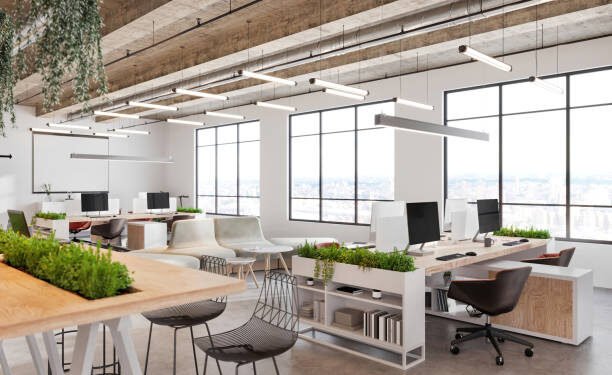The Evolutions of office table design
Office table design has come a long way from the days of drab, utilitarian desks that served little purpose beyond holding paperwork. In today’s dynamic and ever-changing work environments, office tables have evolved to become much more than just furniture. They are now a reflection of a company’s culture, a tool for productivity, and a statement of design and aesthetics. This article explores the fascinating journey of office table design, highlighting the fusion of form and function that has shaped modern workspaces.
The Historical Perspective
To understand the evolution of office table design, it’s essential to delve into the history of office spaces. In the early 20th century, offices were characterized by rigid hierarchical structures, where executives occupied private offices with imposing, oversized desks. These desks were often made of dark, heavy wood, reflecting an aura of authority and permanence.
However, as workplaces started to embrace open-plan layouts and more collaborative workstyles in the latter half of the 20th century, office table design underwent a significant transformation. Gone were the massive, solitary desks of executives; instead, modular workstations became the norm. These workstations featured smaller, more versatile tables that could be reconfigured to accommodate different tasks and promote teamwork.
Functionality Takes Center Stage
One of the key driving forces behind the evolution of office table design has been a focus on functionality. In today’s fast-paced work environments, employees need furniture that can adapt to their needs and enhance their productivity. This shift in focus has given rise to a wide range of innovative table designs, each tailored to specific functions within the office space.
Sit-Stand Tables: With the growing awareness of the health risks associated with prolonged sitting, sit-stand tables have gained immense popularity. These tables allow users to switch between sitting and standing positions, promoting better posture and reducing the negative effects of sedentary work.
Collaborative Tables: Collaboration is at the heart of modern workplaces, and collaborative tables are designed to facilitate teamwork. These tables often feature integrated power outlets, connectivity options, and ergonomic designs to encourage brainstorming and group discussions.
Hot Desking Tables: Many organizations have embraced the concept of hot desking, where employees do not have assigned desks but instead choose their workspace each day. Tables designed for hot desking are often mobile, lightweight, and easily reconfigurable to accommodate different users and tasks.
Conference Tables: Conference rooms are essential for meetings and presentations. Today’s conference tables come equipped with built-in technology, such as video conferencing systems and wireless charging, to enhance communication and productivity during meetings.
Adjustable Height Tables: Adjustable height tables allow users to customize their workstations to their preferences. Whether employees prefer sitting, standing, or something in between, these tables offer flexibility to cater to individual needs.
Form Meets Aesthetics
While functionality remains a top priority, the aesthetics of office table design have also evolved significantly. In the past, office furniture was often perceived as dull and uninspiring. However, modern office tables are designed with aesthetics in mind, serving as statement pieces that contribute to the overall ambiance of the workspace.
Minimalist Design: Minimalism has become a dominant trend in office table design. Clean lines, simple shapes, and a focus on essential features create a sleek and uncluttered appearance that complements contemporary office interiors.
Materials and Finishes: Designers now have a wide array of materials and finishes at their disposal, allowing for greater creativity. From natural wood and glass to metal and acrylic, the choice of materials can influence the overall look and feel of the workspace.
Customization: Many office furniture manufacturers offer customization options, allowing companies to tailor their tables to match their branding and design preferences. This customization not only promotes brand identity but also creates a sense of ownership among employees.
Ergonomics: Aesthetic considerations are not limited to the visual aspect of office tables. Ergonomics play a crucial role in design, ensuring that tables are comfortable and supportive for users. This includes considerations for chair compatibility, monitor placement, and cable management.
Sustainability and Environmental Considerations
As the world becomes more environmentally conscious, sustainability has become a key factor in office table design. Many companies are now seeking eco-friendly options that minimize their carbon footprint and contribute to a healthier planet. Designers are responding to this demand by using sustainable materials, reducing waste in production processes, and creating tables that can be easily recycled or repurposed.
Conclusion
The evolution of office table design is a testament to the changing nature of work and the importance of adaptability, functionality, and aesthetics in modern office environments. Today’s office tables are not just pieces of furniture; they are versatile tools that enhance productivity, promote collaboration, and reflect the values and culture of the organizations that use them. With an ongoing commitment to sustainability and innovation, we can expect office table design to continue evolving, shaping the future of workspaces in exciting and inspiring ways.




